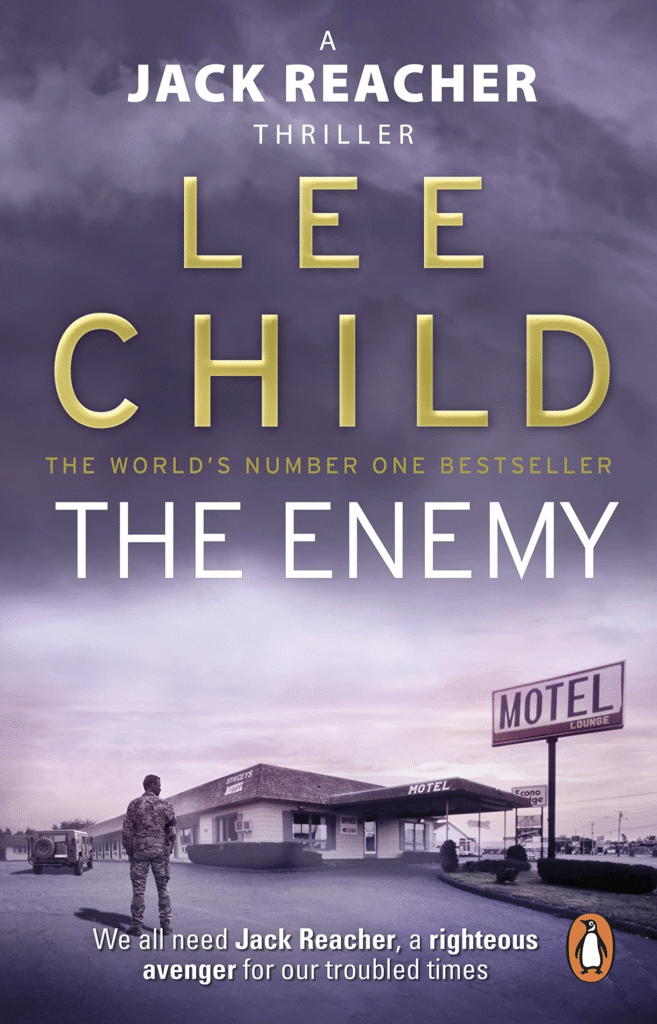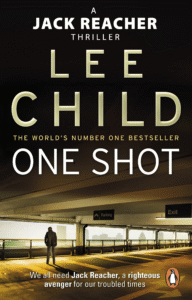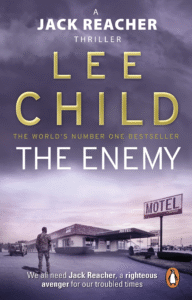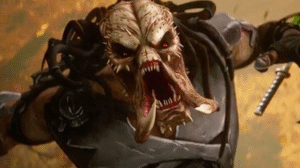The Formative Crucible: Jack Reacher in Lee Child’s The Enemy

Lee Child’s The Enemy, published in 2004, stands as a pivotal entry in the Jack Reacher series, offering readers a deep dive into the formative years of the stoic, nomadic protagonist. Unlike many of the later books that see Reacher as a drifter solving crimes in various towns, The Enemy takes us back to 1990, placing Reacher firmly within the U.S. Army as a military police major. This shift in setting and time provides a crucial lens through which to understand the character’s unwavering moral compass, his innate sense of justice, and the roots of his eventual estrangement from the very institution he once served.
The Inciting Incident
The plot kicks off with the discovery of a two-star general’s body in a North Carolina motel, stripped of his uniform and his briefcase missing. Simultaneously, a car accident in Mississippi results in the death of a high-ranking officer and his family, with striking similarities to the general’s murder. Reacher, initially tasked with informing the general’s wife, soon finds himself embroiled in a conspiracy that reaches the highest echelons of the military. What begins as a seemingly straightforward murder investigation quickly unravels into a complex web of deceit, corruption, and betrayal, forcing Reacher to confront the dark underbelly of the armed forces he has dedicated his life to.
Reacher’s Developing Character
One of the most compelling aspects of The Enemy is its exploration of Reacher’s character before he fully became the lone wolf we know. Here, he operates within a hierarchical structure, grappling with chain of command, internal politics, and the frustrating realities of bureaucracy. Yet, even within these constraints, Reacher’s core principles shine through. He is relentless in his pursuit of truth, unburdened by self-preservation, and fiercely protective of the innocent. His unwavering commitment to justice, even when it means challenging his superiors and risking his career, is a defining characteristic that sets him apart. The book effectively demonstrates how the events of 1990 — the corruption he uncovers, the compromises he witnesses, and the sacrifices he is forced to make — ultimately contribute to his later decision to walk away from the army and live life on his own terms.
Themes and Narrative Craft
Child masterfully weaves a narrative that is both a thrilling whodunit and a nuanced character study. The pacing is relentless, with each chapter adding new layers of intrigue and suspicion. The military setting is rendered with authentic detail, showcasing Child’s meticulous research and understanding of the armed forces. Beyond the pulse-pounding action, The Enemy delves into themes of loyalty, honor, and the blurred lines between duty and morality. It forces Reacher, and by extension the reader, to confront the uncomfortable truth that even institutions built on principles of order and justice can be susceptible to profound corruption.
Conclusion
In conclusion, The Enemy is more than just another Jack Reacher thriller; it is an essential piece of the puzzle for understanding the iconic character. By taking us back to Reacher’s military days, Lee Child provides crucial context for his later life choices and solidifies his reputation as a protagonist driven by an unshakeable sense of right and wrong. It’s a gripping, thought-provoking novel that not only delivers on the promise of a taut mystery but also enriches the reader’s appreciation for the complex and compelling figure that is Jack Reacher.




















